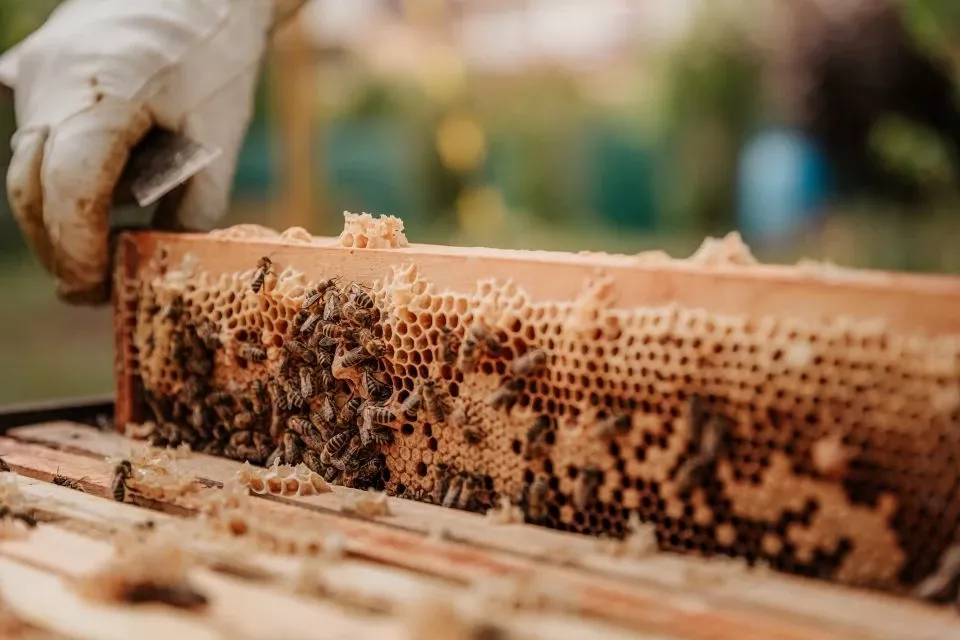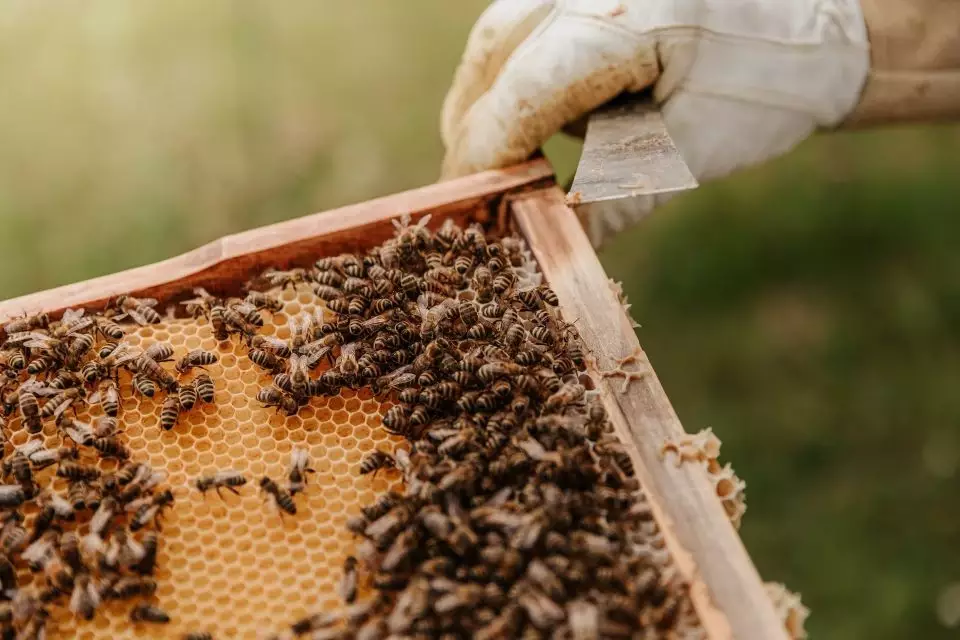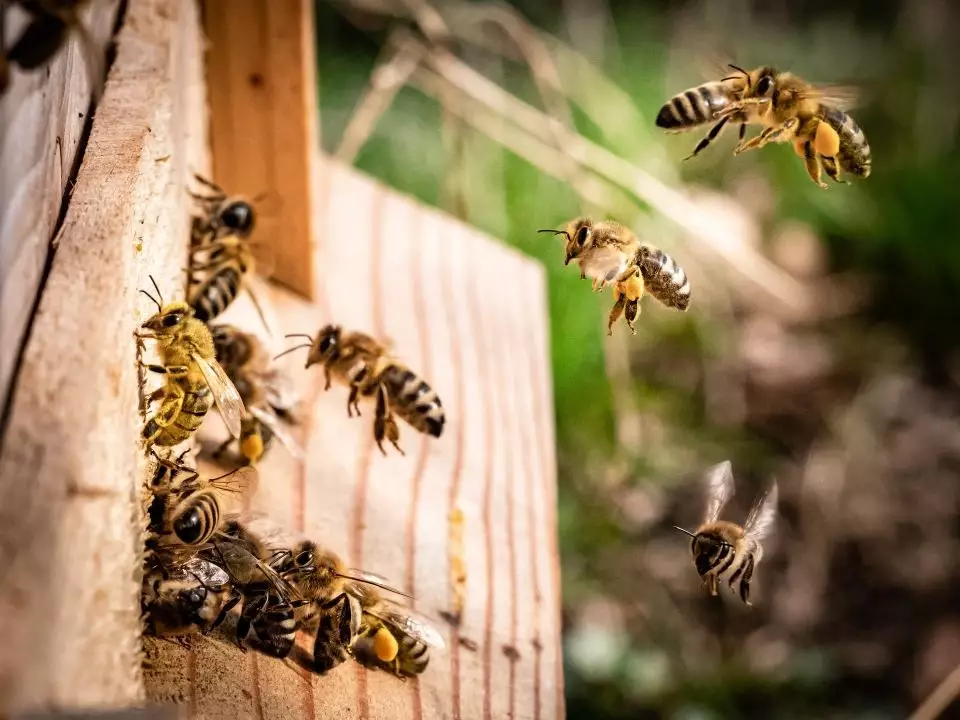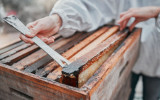How Small Can a Beehive Be? (Surprising Dimensions)
When we talk about beehives, many people immediately think of the classic, white wooden structures we often see in backyards or fields. But did you know that beehives come in a variety of different sizes and shapes?
A small beehive will have dimensions of 19 inches in length, 14 inches in width, and 5 inches in height or depth. This is the smallest size of a modern Langstroth Box which can hold about seven to ten frames for the bees to store nectar, pollen and honey.
You can build a beehive with 5 to 6 Langstroth boxes, depending on the size of the hive. Many stack this type of box to form a tall tower like structure, but it is also possible to arrange them side by side in a flat configuration.
Summary
- A small beehive is 19"x14"x5" in dimensions.
- There are several beehive sizes, depending on the number of bees you have.
- In creating a hive, you can stack boxes, and each can contain a minimum of seven frames.
- A large hive would usually have 10 frames or more.

On this page:
Typical Dimensions of A Beehive
In a modern beehive, the Langstroth box is commonly used, and it's built with wooden frames that are moveable, stackable, and easy to inspect. The dimensions of a typical Langstroth hive are the following:
| Langstroth Hive Dimensions |
|---|
| Width: 19 inches |
| Length: 14 inches |
| Height: 5 inches |
This size is ideal for beekeepers who don’t have a lot of space to dedicate to their hive. It is also the minimum size that can be used for healthy beekeeping. However, there's a method where you can use 5 to 6 boxes and stack them to create a taller structure. Just make sure to keep the size and weight in mind and use boxes that are at least 5 inches deep, so they can hold enough frames for the bees.
For reference, here are the dimensions needed for a small size beehive using the Langstroth beehive box:
| Name of Each Layer | Brood Chamber | Honey Super | Frames |
|---|---|---|---|
| Minimum Length | 19 inches | 19 inches | 13.5 inches |
| Minimum Width | 14 inches | 14 inches | 0.7 inch |
| Minimum Height | 5 inches | 4 inches | 4 inches |
The brood chamber is usually in the bottom boxes of the hive, which houses the worker-made cells where the eggs, larvae, and pupae develop.
The honey super is where the bees will collect and keep extra honey for our use.
The frames are used to hold the bee combs where honey, eggs, larvae, pupae, pollen, nectar are stored.
How Do You Make A Small Beehive?
Making a small beehive is simple, since the Langstroth boxes are designed to fit together and can be stacked. Here are the steps needed to create a small beehive:

1. Choose your Langstroth boxes
As mentioned above, the smallest box has a dimension of 19"L x 14"W x 5"H, so you need enough boxes that fit this size. Make sure to choose sturdy and durable materials, like cedar wood or pine.
On the other hand, if you're planning on making a bigger beehive, make sure to choose boxes with at least 5" of depth for your bees.
2. Assemble the Langstroth boxes
Stack the boxes together in a single or double layer, depending on how tall you want your beehive to be. Make sure that the sizes are compatible and would hold the frames together.
You can also use spacers between the boxes if you want more space for the bees to move around and make it easier to inspect the hive.
3. Add your frames
Once you have your boxes ready, it’s time to add the frames. Place the frames inside the boxes and make sure that they’re secure and won't easily fall out.
For each Langstroth box, it can hold a minimum of 8 frames. This will give your bees enough space to store their honey and pollen. Stacking more box, if you're planning on having a 3-layer or 4-layer beehive, you'll need to add more frames for the bees.
4. Add a cover or lid
Lastly, add a cover or lid to your beehive. This will protect the hive from any external factors and keep the bees safe from predators. Make sure that it tightly fits your beehive, so there won't be any gaps for pests or other animals to enter.
How Big Should Your Beehive Be?
A standard beehive is 19 inches in length, 16 inches wide, and 9 inches in height. This is the common size for a beehive and is ideal for beekeepers who don't have a lot of space to dedicate for their hive.
The size of your beehive really depends on how many bees you plan to keep. If you’re just starting out, a small beehive is more than enough, but if you’re planning on having a larger bee colony, then you should consider getting a bigger beehive.
This standard size has different super dimensions for a Langstroth hive. These are the 3 recommended sizes for a super box:
| Super Box | Size |
|---|---|
| Shallow | 16″ x 19 ⅞” x 5 ⅞” |
| Medium | 16″ x 19 ⅞” x 6 ⅝” |
| Deep | 16″ x 19 ⅞” x 9 ⅝” |
Depending on the number of bees in your hive, adjust the size of the box accordingly. If you’re keeping a large bee colony, choose the deep super box.
This size and type of Langstroth hive are perfect for beekeepers who want to keep their bees in a safe, comfortable, and efficient environment. With the right care and attention, your bees will thrive in this type of beehive.
Choosing A Box for 7 and 10 Frame Hives
When it comes to choosing the right boxes for your beehive, there are a few factors that you need to consider. For Langstroth hives, the two most common sizes are 7 and 10 frame boxes.
Aside from the width and length, the deepness of the box is crucial for the bees. There are three types of box for each size – shallow, medium, or deep. Here's what you'll expect for full honey supers in each size:
| Super Box | 7-Frame Honey Capacity | 10-Frame Honey Capacity |
|---|---|---|
| Shallow | 32 pounds | 40 pounds |
| Medium | 40 pounds | 50 pounds |
| Deep | 64 pounds | 80 pounds |
If you're planning on keeping a small bee colony, start with the shallow box and then switch to medium or deep boxes once your hive is larger. That way, your bees will have the space they need for honey and pollen storage.
By taking into consideration these factors, you can find the perfect box for your beehive. With the right care and attention, you can make sure that your bees are safe and comfortable in their new home.

How many bees can fit in a beehive
For a fully grown beehive, you can expect somewhere around 10,000 bees depending on the size of your hive, the types of bees, and other factors.
However, those who are starting out with beekeeping, you can start with as little as 500–5000 bees. This may be enough to establish your colony and help the hive thrive.
But if you’re looking for a larger bee colony, you should expect to have more bees in your hive. A 10,000 to 60,000 bees in your colony is possible, depending on the size of your hive and other factors.
Remember to always be aware of the number of bees in your hive, as overcrowding can be dangerous for the bees. Too many bees in the same space can cause them to become stressed, which can lead to disease or death.

